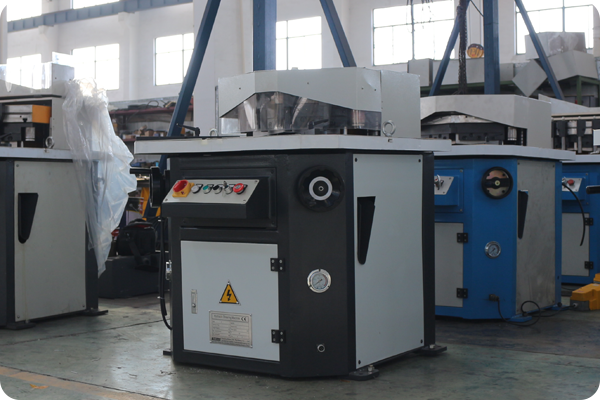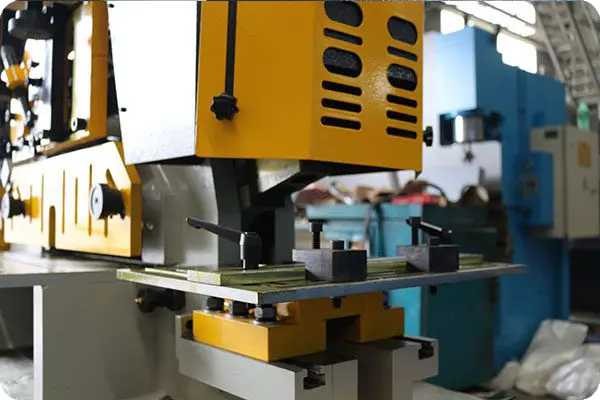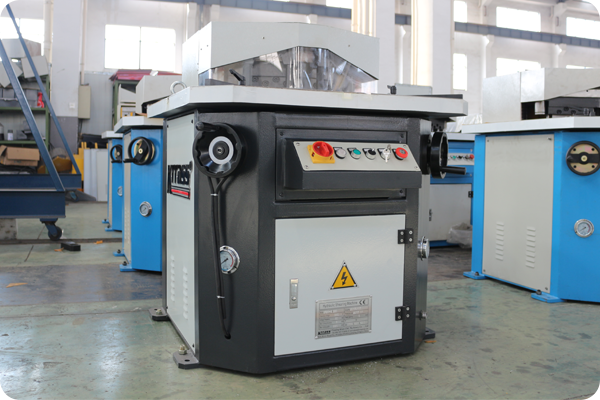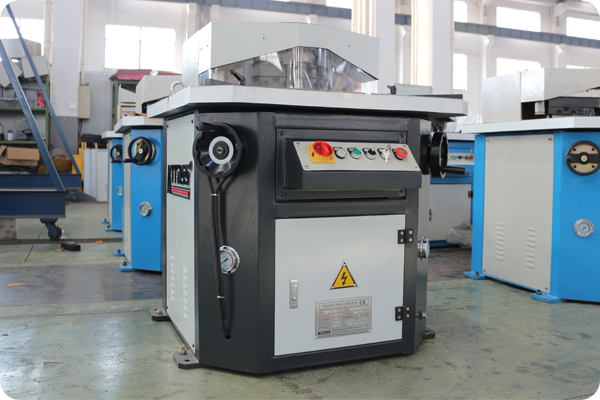Welcome to the comprehensive guide on notching machine mastery, where we delve deep into the pivotal role these machines play in modern manufacturing. From the basics of what a notching machine is, to the nuanced differences between fixed angle and variable angle models, this article is your one-stop resource. We cover key components, operational insights, and strategic advice on selecting the right machine for your needs. Our focus is on enhancing productivity and ensuring the quality of your projects, all while balancing speed and precision. Dive into our expert insights to unlock the full potential of notching machines in your manufacturing processes.
- The Role of Notching Machines in Modern Manufacturing
- What is a Notching Machine?
- Types of Notching Machines: Fixed Angle vs. Variable Angle
- Key Components of a Notching Machine
- How Notching Machines Work: The Process Explained
- Selecting the Right Notching Machine for Your Needs
- Fundamental Techniques for Notching
- Speed vs. Quality: Finding the Right Balance
- Leveraging Variable Angle Notching for Complex Projects
The Role of Notching Machines in Modern Manufacturing
In today's fast-paced manufacturing landscape, the significance of notching machines cannot be overstated. These robust tools have carved a niche for themselves, becoming indispensable in the creation of precise and clean notches in various materials. As a leading notching machine manufacturer, we understand the criticality of these machines in ensuring seamless production lines and enhancing overall productivity.
Notching machines, with their ability to deliver accurate and repetitive cuts, are central to operations in a myriad of industries including metal fabrication, automotive, and aerospace. Their versatility allows for a wide range of applications, from preparing metal sheets for complex welding processes to creating intricate components necessary for automotive assemblies. The precision and efficiency of notching machines significantly reduce material waste, thereby optimizing resource utilization and minimizing production costs.
Moreover, the evolution of notching machines, incorporating advanced technologies such as CNC (Computer Numerical Control), has further revolutionized the manufacturing sector. This integration not only enhances precision but also offers unparalleled flexibility in operations, enabling manufacturers to quickly adapt to market demands and custom specifications. As a result, notching machines have become a cornerstone in achieving operational excellence and sustaining competitive advantage in the modern manufacturing landscape.
At the heart of our commitment as a notching machine manufacturer is the drive to innovate and provide solutions that meet and exceed the evolving needs of our clients. By harnessing the power of notching machines, manufacturers can unlock new levels of productivity, precision, and profitability, paving the way for future advancements in manufacturing technologies.

What is a Notching Machine?
A notching machine is a specialized piece of equipment used in the manufacturing industry to cut notches or slots in a workpiece. This type of machine is critical for creating precise angles and shapes in various materials, such as metal, plastic, or wood, facilitating the assembly of complex structures or the preparation of edges for welding. Notching machines can vary widely in terms of complexity and size, from manual, hand-operated tools to fully automated, CNC-controlled systems.
The primary function of a notching machine is to remove material from a workpiece to create a specific profile or notch. This is achieved through the use of cutting tools or dies that are shaped according to the desired notch geometry. The process is highly efficient and can be precisely controlled to achieve high levels of accuracy, making notching machines an essential tool in any manufacturing operation that requires the fabrication of components with precise dimensions and tolerances.
In the realm of modern manufacturing, notching machines play a pivotal role in enhancing production capabilities. They enable manufacturers to quickly and accurately produce components with complex shapes, thereby streamlining assembly processes and improving product quality. Whether in metalworking, construction, or aerospace, the versatility and precision of notching machines make them a valuable asset to manufacturers seeking to optimize their operations and produce high-quality products.
As a leading manufacturer of notching machines, we are dedicated to providing our clients with advanced, reliable, and efficient machinery. Our commitment to innovation ensures that our notching machines incorporate the latest technologies, offering superior performance, durability, and ease of use. By choosing our notching machines, manufacturers can achieve enhanced productivity, precision, and profitability in their operations.
Types of Notching Machines: Fixed Angle vs. Variable Angle
Understanding the different types of notching machines is essential for manufacturers to select the right equipment that meets their specific production needs. Primarily, notching machines can be categorized into two main types based on the angle flexibility they offer: fixed angle notching machines and variable angle notching machines.
Fixed Angle Notching Machines
Fixed angle notching machines are designed to cut notches at a predetermined angle, typically 90 degrees. These machines are highly efficient for operations that require uniform notches across a large volume of workpieces. The simplicity and robustness of fixed angle notching machines make them a popular choice for manufacturers who prioritize speed and consistency in their production processes. However, the limitation in angle adjustability means that for projects requiring multiple notch angles, alternative solutions or additional machinery would be necessary.
Variable Angle Notching Machines
Variable angle notching machines, on the other hand, offer the flexibility to adjust the cutting angle, typically ranging from 30 to 140 degrees. This adjustability allows manufacturers to use a single machine for a variety of notching tasks, making it a versatile and cost-effective solution for workshops that handle diverse projects. Variable angle notching machines are particularly valuable for custom fabrication work where the dimensions and angles of notches can vary significantly from one job to another.
Both fixed and variable angle notching machines have their place in modern manufacturing, with the choice between the two largely depending on the specific requirements of the production tasks at hand. Fixed angle machines are best suited for high-volume, repetitive tasks where uniformity is key, while variable angle machines offer greater flexibility for custom and varied projects.
As a leading notching machine manufacturer, we offer both fixed and variable angle notching machines, equipped with the latest technology to ensure precision, durability, and ease of use. Our expertise in the field allows us to provide tailored solutions to meet the unique needs of our clients, ensuring they can achieve optimal productivity and efficiency in their manufacturing operations.

Key Components of a Notching Machine
Notching machines, while varying widely in design and functionality, consist of several key components that are crucial for their operation. Understanding these components is essential for operators to ensure optimal performance and longevity of the machine. Here, we delve into the core components that make up a notching machine, highlighting their roles and importance in the notching process.
Frame
The frame of a notching machine provides the structural support necessary to withstand the forces exerted during the notching process. It is designed to be robust and stable, ensuring precision and reliability in cutting operations. The frame's durability is paramount, as it directly impacts the machine's lifespan and the quality of work it produces.
Cutting Blades/Dies
Cutting blades or dies are the heart of the notching machine, responsible for the actual cutting of the material. These components are made from high-grade materials to maintain sharpness and resist wear over time. The design and shape of the blades or dies can vary to accommodate different types of notches and materials, offering flexibility and precision in the notching process.
Worktable
The worktable is where the workpiece is placed and secured during the notching operation. It is typically equipped with guides, clamps, or other holding mechanisms to ensure the workpiece remains stable and accurately positioned throughout the cutting process. The design of the worktable can significantly affect the ease of operation and the accuracy of the notches produced.
Control System
The control system of a notching machine, especially in models equipped with CNC technology, plays a critical role in automating the notching process. It allows for precise adjustments to the cutting parameters, such as speed, angle, and depth, ensuring high levels of accuracy and repeatability. The control system can range from simple manual controls to advanced digital interfaces, depending on the complexity of the machine.
These key components are integral to the operation of a notching machine, each contributing to its functionality, performance, and the quality of work it can produce. As a leading manufacturer of notching machines, we ensure that each component is meticulously designed and manufactured to meet the highest standards of quality and efficiency. Our commitment to innovation and excellence ensures that our clients receive notching machines that are not only powerful and precise but also reliable and easy to use.
How Notching Machines Work: The Process Explained
The operation of a notching machine, at its core, involves a straightforward yet precise process. This section aims to demystify the workings of notching machines, providing a clear understanding of how these essential tools perform their critical function in the manufacturing sector. By dissecting the process, we can appreciate the sophistication and efficiency that notching machines bring to modern manufacturing workflows.
Step 1: Material Placement
The notching process begins with the placement of the workpiece on the machine's worktable. The operator ensures that the material is securely fixed, using the machine's clamps or guides to prevent any movement during the cutting process. This step is crucial for maintaining precision and achieving clean, accurate notches.
Step 2: Setting the Parameters
Once the material is in place, the operator sets the desired cutting parameters on the control system. This includes adjusting the cutting angle, depth, and, if applicable, the feed rate. For CNC-controlled notching machines, this step may involve inputting specific program instructions to automate the notching process according to predefined patterns.
Step 3: The Cutting Process
With the material secured and parameters set, the machine initiates the cutting process. The cutting tool or die descends onto the workpiece, removing material to form the notch. The precision of the machine ensures that each notch is consistent with the last, providing uniformity across the production run. The speed and efficiency of the cutting process are largely dependent on the machine's design and the quality of its components.
Step 4: Inspection and Finishing
After the notching is complete, the operator inspects the workpiece for accuracy and quality. Any necessary finishing processes, such as deburring or smoothing of the notched edges, are performed to prepare the piece for further processing or assembly. This final step ensures that the component meets the strict quality standards required for its intended application.
Understanding the notching process highlights the importance of precision, efficiency, and reliability in notching machines. As a leading notching machine manufacturer, we are committed to providing our clients with state-of-the-art machinery that incorporates the latest technological advancements. Our notching machines are designed to streamline production processes, enhance productivity, and produce high-quality components, ensuring our clients remain at the forefront of their industries.

Selecting the Right Notching Machine for Your Needs
Choosing the appropriate notching machine is a pivotal decision for manufacturers, directly impacting production efficiency, product quality, and operational costs. The selection process involves a thorough understanding of your manufacturing requirements and how different types of notching machines align with those needs. Here, we outline key considerations to guide you in selecting the notching machine that best suits your production goals.
Assess Your Notching Requirements
Begin by evaluating the specific notching tasks you need to perform. Consider the types of materials you will be working with, the range of notch sizes and angles required, and the volume of production. Fixed angle notching machines may suffice for operations with standard notching specifications, while variable angle machines offer greater flexibility for diverse projects.
Consider Machine Precision and Capacity
The precision and capacity of a notching machine are critical to achieving the desired quality and efficiency in your production. Look for machines that offer high accuracy in notch placement and dimensions, especially if you are working on precision-critical components. Additionally, consider the machine's capacity to handle the volume of work you anticipate, ensuring it can meet your production demands without undue delays.
Evaluate Technological Features
Modern notching machines come equipped with various technological advancements, such as CNC controls, that can significantly enhance production efficiency and accuracy. Assess the technology incorporated in the notching machines you are considering and determine how these features can streamline your manufacturing processes and improve product quality.

Understand Maintenance and Support Requirements
The longevity and reliability of a notching machine depend on regular maintenance and the availability of support from the manufacturer. Investigate the maintenance requirements of the machines you are considering and ensure that you have access to technical support and spare parts. Choosing a machine from a reputable manufacturer with a proven track record of quality and customer service can save significant time and resources in the long run.
Selecting the right notching machine for your manufacturing operations is a strategic decision that requires careful consideration of your specific needs, the capabilities of different machines, and the long-term support available. As a leading notching machine manufacturer, we are committed to helping our clients navigate this selection process, offering expert advice and high-quality machines that meet the diverse needs of modern manufacturing. By choosing the right notching machine, you can enhance your production efficiency, ensure product quality, and maintain a competitive edge in your industry.
Fundamental Techniques for Notching
Mastering the art of notching requires a deep understanding of the fundamental techniques that underpin this essential manufacturing process. Whether you're working with a fixed angle or a variable angle notching machine, knowing the core principles can significantly enhance the precision, efficiency, and quality of your work. Here, we explore several key techniques that are crucial for effective notching.
Proper Material Preparation
The first step in achieving a precise notch is to ensure that the material is properly prepared. This includes cleaning the surface of the material to remove any contaminants that could affect the cutting quality and making sure the material is flat and free from warps or bends. Proper material preparation ensures that the notching process starts on the best possible footing.
Accurate Alignment and Clamping
Before initiating the notching process, it is crucial to accurately align the workpiece and securely clamp it in place. This prevents any movement during the cutting process, which could lead to inaccuracies or irregularities in the notch. Precision in alignment and clamping not only improves the quality of the notch but also enhances the safety of the operation.
Selection of the Correct Cutting Tools
Choosing the right cutting tool or die for the specific material and notch requirement is essential. Different materials and notch shapes may require different types of cutting tools to achieve the best results. Using the correct tool not only improves the quality of the notch but also extends the lifespan of the tools and the machine itself.
Monitoring and Adjusting Cutting Parameters
Throughout the notching process, monitoring and adjusting cutting parameters such as speed, force, and angle is vital for achieving optimal results. Adjustments may be necessary to accommodate different materials, thicknesses, and desired outcomes. This dynamic approach ensures that each notch is executed with precision and efficiency.
Regular Maintenance and Calibration
To maintain the highest levels of accuracy and efficiency, regular maintenance and calibration of the notching machine are imperative. This includes sharpening cutting tools, checking and adjusting alignments, and ensuring that all components are functioning correctly. Regular maintenance prevents downtime and ensures consistent quality in notching operations.
By mastering these fundamental techniques, operators can leverage the full capabilities of their notching machines, producing high-quality notches that meet exact specifications. As a leading manufacturer of notching machines, we provide comprehensive training and support to ensure our clients achieve the best possible outcomes from their equipment, reinforcing our commitment to excellence in the manufacturing industry.
Speed vs. Quality: Finding the Right Balance
In the world of manufacturing, the balance between speed and quality is a pivotal aspect of operational efficiency. Notching machines, with their critical role in the production process, are no exception to this rule. Achieving the optimal balance can significantly impact a manufacturer's productivity, cost-effectiveness, and overall product quality. Let's explore how to find the right equilibrium for your notching operations.
Understanding the Trade-offs
Speeding up the notching process can lead to increased throughput and reduced lead times, which are crucial for meeting high demand or tight deadlines. However, pushing the machinery too hard or too fast can result in diminished quality, with inaccuracies and defects that may compromise the integrity of the final product. Conversely, prioritizing quality with meticulous attention to detail and slower production speeds ensures high-quality outcomes but may increase production costs and time.
Optimizing Production Processes
The key to finding the right balance lies in optimizing the production process. This involves a comprehensive understanding of the capabilities and limitations of your notching machine, as well as the specific requirements of the task at hand. Implementing best practices for machine operation, such as proper maintenance, correct tool selection, and accurate parameter settings, can enhance both speed and quality.
Leveraging Technology
Advancements in notching machine technology, such as CNC controls and automated material handling systems, offer significant opportunities to improve both speed and quality. These technologies allow for precise control over the notching process, reducing the margin for error and enabling faster production without sacrificing quality. Investing in the latest technology can be a game-changer for manufacturers looking to excel in competitive markets.
Continuous Improvement
Adopting a philosophy of continuous improvement can also help manufacturers find the optimal balance between speed and quality. This involves regularly reviewing and refining production processes, training staff, and staying informed about industry best practices and technological advancements. By continually striving to enhance efficiency and quality, manufacturers can achieve sustainable growth and success.
Finding the right balance between speed and quality in notching operations is a dynamic and ongoing process. It requires a strategic approach, informed decision-making, and investment in technology and training. As a leading notching machine manufacturer, we are committed to helping our clients navigate these challenges, providing high-quality machines and expert support to ensure they achieve the best possible outcomes in their manufacturing operations.
Leveraging Variable Angle Notching for Complex Projects
Variable angle notching machines represent a significant advancement in the flexibility and capability of manufacturing operations. These machines, capable of adjusting the angle of the notch to suit specific requirements, offer unparalleled versatility for handling complex projects. This adaptability makes them an invaluable asset for manufacturers looking to expand their production capabilities and tackle a wider range of projects. Here, we delve into how leveraging variable angle notching can benefit your manufacturing processes, especially for complex and custom projects.
Enhanced Flexibility
The ability to adjust the cutting angle on a variable angle notching machine allows manufacturers to easily adapt to different project requirements without the need for multiple specialized machines. This flexibility is particularly beneficial for custom fabrication tasks, where each project may have unique specifications and challenges. With a variable angle notching machine, manufacturers can handle a variety of projects with a single piece of equipment, optimizing their workspace and reducing equipment costs.
Increased Precision and Quality
Variable angle notching machines are designed for precision, offering fine control over the angle and depth of the notch. This precision is crucial for complex projects where exact specifications are essential for the fit and function of the final product. The ability to produce precise notches at various angles ensures high-quality results that meet or exceed customer expectations.
Cost and Time Efficiency
By streamlining the notching process for complex projects, variable angle notching machines can significantly reduce production times and costs. The efficiency of being able to quickly adjust the machine for different notching angles eliminates the downtime associated with changing out tools or machines, allowing for faster turnaround times on projects. This efficiency not only reduces operational costs but also enables manufacturers to take on more projects, enhancing profitability.
Meeting the Demands of Modern Manufacturing
As manufacturing demands become more complex and customized, the ability to quickly and accurately produce components with variable notches is increasingly important. Variable angle notching machines meet these demands, providing the versatility and precision needed to stay competitive in today's market. By leveraging these machines, manufacturers can expand their capabilities, offering a broader range of services to their clients and opening up new opportunities for business growth.
In conclusion, variable angle notching machines are a powerful tool for manufacturers looking to enhance their production capabilities for complex and custom projects. The flexibility, precision, and efficiency these machines offer make them an essential component of modern manufacturing operations. As a leading manufacturer of notching machines, we are committed to providing our clients with the advanced technology and support they need to succeed in the competitive manufacturing landscape.
Empowering Manufacturing Excellence with KRRASS
In conclusion, the journey to mastering notching machines is both intricate and rewarding. These machines are indispensable in achieving precision, efficiency, and versatility in manufacturing operations. Whether you're working on standard high-volume projects or tackling complex custom tasks, the right notching machine can significantly enhance your production capabilities. As a leading notching machine manufacturer, KRRASS is committed to empowering manufacturers worldwide. Our innovative solutions and expert guidance ensure that your operations stay ahead of the curve. Explore our range of high-quality notching machines and discover how we can elevate your manufacturing processes at https://www.krrass.com/. Join us in driving manufacturing excellence forward.




